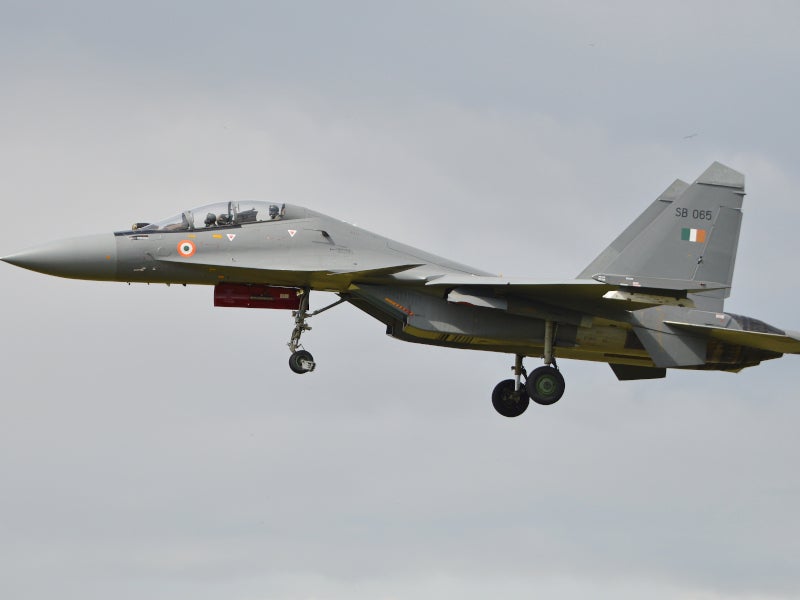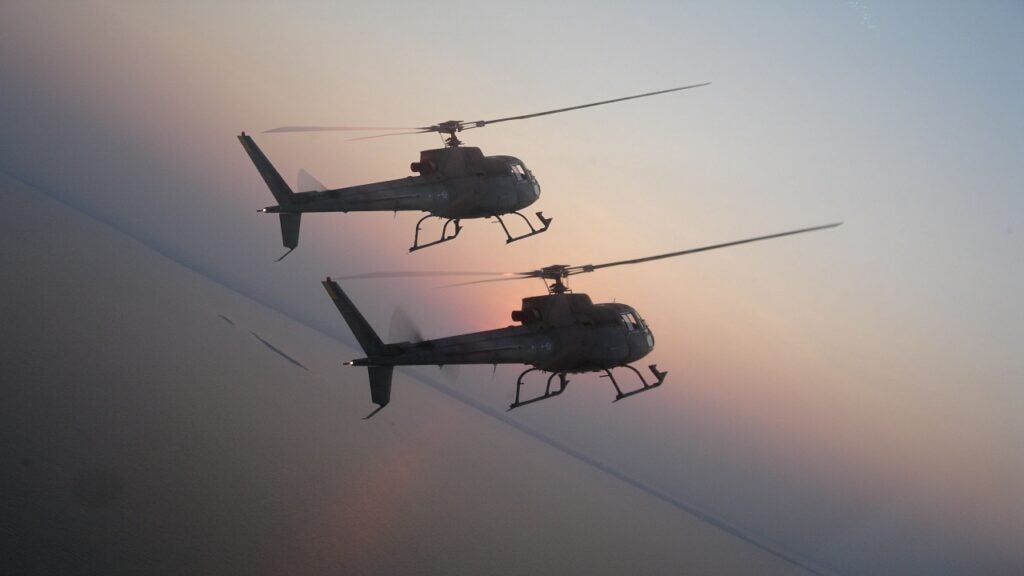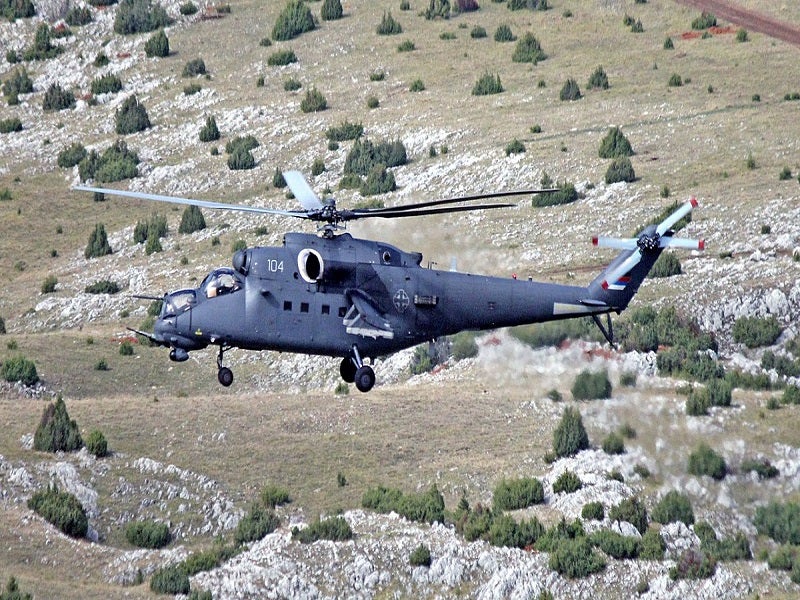
The Sukhoi Su-30MKI is a multirole combat fighter aircraft jointly developed by the Sukhoi Design Bureau and Hindustan Aeronautics Limited (HAL) for the Indian Air Force (IAF). Based on the Su-30 fighter aircraft, Su-30MKI is equipped with thrust vectoring control and canards.
The development of the Su-30MKI for the IAF began in 1995. Sukhoi and Irkutsk Aircraft Production Association (now known as Irkut Corporation) were initially responsible for the development and production of the aircraft respectively.
Sukhoi built two prototypes of the Su-30MKI between 1995 and 1998. The first prototype, Su-30I-1, made its first flight in July 1997. Production began at the Irkutsk plant in 2000. The first pre-production aircraft completed its maiden flight in November 2000. India signed a MoU with Russia in October 2000, to start the licence production of Su-30MKIs at HAL’s plant.
A new squadron, known as the 222 Squadron (Tigersharks) was stood up at the IAF’s Thanjavur airbase in the southern part of India. The fighter jets of the new squadron can carry BrahMos supersonic cruise missiles. India achieved indigenously overhauling capability of the Sukhoi-30 MKI fighter jet. The IAF received the first domestically overhauled Su-30MKI in October 2018.
Orders and deliveries of the multirole fighter aircraft
In November 1996, India placed an order with Sukhoi for eight Su-30K fighters and 32 Su-30MKI aircraft. Fitted with enhanced avionics, engines and weapons, the aircraft were delivered in batches.
In December 2000, HAL signed a contract with Rosoboronexport for the licence production of Su-30MKI aircraft. As part of the contract, HAL will produce a total of 140 Su-30MKIs in four phases to complete the programme by 2015.
The first ten Russian-made Su-30MKI aircraft were delivered to the IAF in mid-2002. The aircraft were inducted into service in September 2002. The second batch of 12 aircraft was handed over in 2003.
The first Sukhoi Su-30MKI assembled by HAL was rolled out in November 2004. The first batch of two aircraft was delivered to the IAF in March 2005. The IAF placed an order with HAL for 40 Su-30MKIs in 2007.
In December 2012, HAL signed a contract with the Ministry of Defence and Rosoboronexport for the production and delivery of 42 Su-30MKI aircraft, bringing the total number of orders to 222. The IAF operates 260 Su-30MKIs as of January 2020, while 12 more are expected to be delivered by the end of 2020.
Su-30MKI design and avionics
The Sukhoi Su-30MKI aircraft incorporates an aerodynamic airframe made of titanium and high intensity aluminium alloys. The twin stabilisers and horizontal tail consoles are joined to tail beams. The semi-monocoque fuselage head includes the cockpit, radar sections and the avionics bay. The section between the engine nacelles houses the equipment bay, fuel storage and the brake parachute mechanism. The aircraft has a length of 21.9m, wingspan of 14.7m and a height of 6.4m. The maximum take-off weight of Su-30MKI is 38,800kg.
The tandem glass cockpit of the Su-30MKI accommodates two pilots. The forward cockpit is equipped with an integrated avionics suite incorporating Elbit Su 967 head-up display (HUD), seven active-matrix liquid crystal displays (AMLCD) and primary cockpit instrumentation from Thales. The HAL-built aircraft are equipped with multifunction displays (MFD) supplied by Samtel Display Systems.
The aircraft integrates a fly-by-wire (FBW) flight control system. A large monochromatic display screen installed in the rear cockpit provides air-to-ground missile guidance. The Su-30MKI is also equipped with a N011M passive electronically scanned array radar, OLS-30 laser-optical locator system and Litening target designation pod to guide air-to-surface missile and laser guided munitions.
The N011M will be replaced with new Zhuk AESA (active, electronically scanned array) radar.
Weapon systems and countermeasures
The Su-30MKI is armed with a 30mm Gsh-30-1 cannon with 150 rounds of ammunition. The aircraft features 12 hardpoints capable of carrying external stores of up to 8t. The aircraft can launch a range of air-to-surface missiles, including Kh-29L/T/TYe, Kh-31A/P, Kh-59M and Nirbhay.
The Su-30MKI fleet of IAF was fitted with air-launched version of BrahMos supersonic cruise missiles and was successfully tested in November 2017. The BrahMos can strike targets within the range of 290km. The IAF completed the successful integration of the cruise missile on the fighter, with the third live firing of the missile from the aircraft in December 2019.
The aircraft can also carry Vympel-built R-27R, R-73 and R-77 air-to-air missiles, as well as rocket pods, KAB-500 and KAB-1500 laser-guided bombs.
The Su-30MKI is fitted with a tarang radar warning receiver (RWR) indigenously developed by the Defence Research and Development Organisation (DRDO). The aircraft also integrates chaff / flare dispensers and active jammers.
Sukhoi Su-30MKI engine
The Su-30MKI is powered by two Al-31FP turbojet engines. Each engine generates a full afterburn thrust of 12,500kgf. The power plant, equipped with thrust vector control, provides a maximum speed of Mach 1.9 in horizontal flight and a rate of climb of 300m/s.
The aircraft has a maximum unrefuelled flight range of 3,000km. The in-flight refuelling system of Su-30MKI provides a maximum range of 8,000km with two refuellings.
The Global Military Aircraft Market 2011-2021
This project forms part of our recent analysis and forecasts of the global military aircraft market available from our business information platform Strategic Defence Intelligence. For more information click here or contact us: EMEA: +44 20 7936 6783; Americas: +1 415 439 4914; Asia Pacific: +61 2 9947 9709 or via email.
Related content
Tejas Light Combat Supersonic Fighter, India
The Tejas single-seat, single-engine, lightweight, high-agility supersonic fighter aircraft has been undergoing flight trials in preparation for operational clearance, and by March 2012 had flown more than 1,816 test flights up to speeds of Mach 1.4.
Akash Surface-to-Air Missile (SAM) System, India
The Akash (sky) is a mid-range surface-to-air missile (SAM) system being built by India’s state-owned Defence Research and Development Organisation (DRDO).




